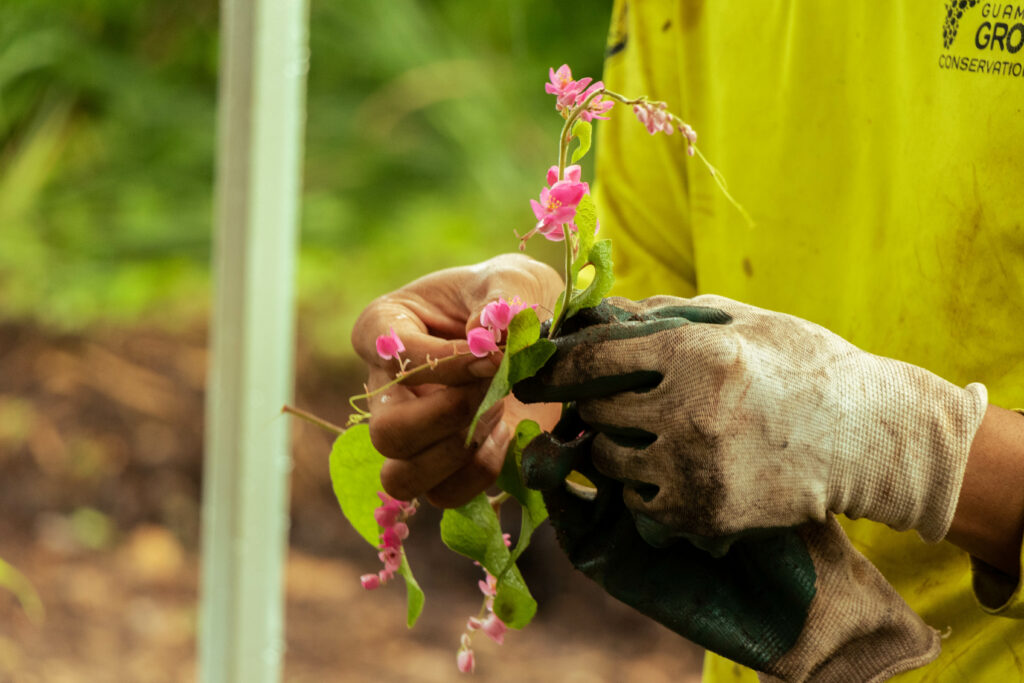G3 Conservation Corps harvest invasive creeper


As part of their training with the University of Guam’s Guam Green Growth initiative, the G3 Conservation Corps members recently participated in an activity from Sept 7 to 10 to clear portions of land overrun by an invasive vine —- the chain of love (kadena de amor) — and repurposed parts of the plant into viable products for the circular economy.
In partnership with the Guam Department of Agriculture, the corps members harvested the vine from a patch of Yona land near the entrance of the Togcha cemetery, an area with a heavy overgrowth of the invasive creeper. The vine reproduces by tubers and creates a canopy cover that prevents underlying plants and trees from receiving sunlight and photosynthesizing food. According to a publication from the UOG College of Natural and Applied Sciences, the vine was introduced as an ornamental and was first recorded on Guam as early as 1905 by botanist William Safford.
At the site, Christine Camacho Fejeran, Forestry Division Chief, Forestry and Soil Resources Division at the department provided an orientation on the removal of the invasive plant species. She said the G3 Conservation Corps chose one of the most challenging conservation and clean-up sites on island. “We at the department appreciate the efforts of the G3 Conservation Corps,” Fejeran said, adding that the removal process could guide landowners on how to harvest the invasive vine from their properties.
Alana Chargualaf, G3 Conservation Corps member, said that they must ensure the chain of love tubers and root system are removed completely from the ground to prevent the plant from repropagating. “If it stays in the dirt, it will grow again. It is the type of plant that can survive droughts,” she said.
Gov. Lou Leon Guerrero and Lt. Gov. Joshua Tenorio also visited the site on Wednesday to commend the efforts of the group.
The G3 Conservation Corps members were also tasked to find other uses for the invasive vine, following the circular economy framework. The circular economy system promotes the regeneration of natural systems, reuse or recycling of materials to extend their life cycle and divert waste from the landfill.
Jackie Jones, another G3 Conservation Corps member, said, “We are still in the experimental stage and trying to figure out what can we do with this — to take something that has been such a problem and turn it into a part of a solution.”
The G3 Conservation Corps program prepares the community for the emerging green economy. The program is aligned with the current island-wide efforts to achieve sustainability and other UN SDGs. It is a joint program of the UOG Center for Island Sustainability, the Office of the Governor, and Guam NSF EPSCoR’s Education and Workforce Development objective.


